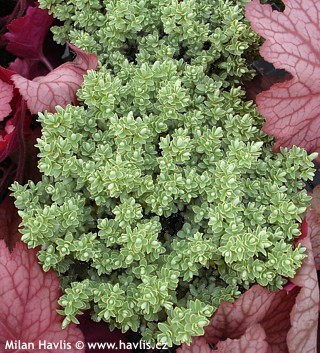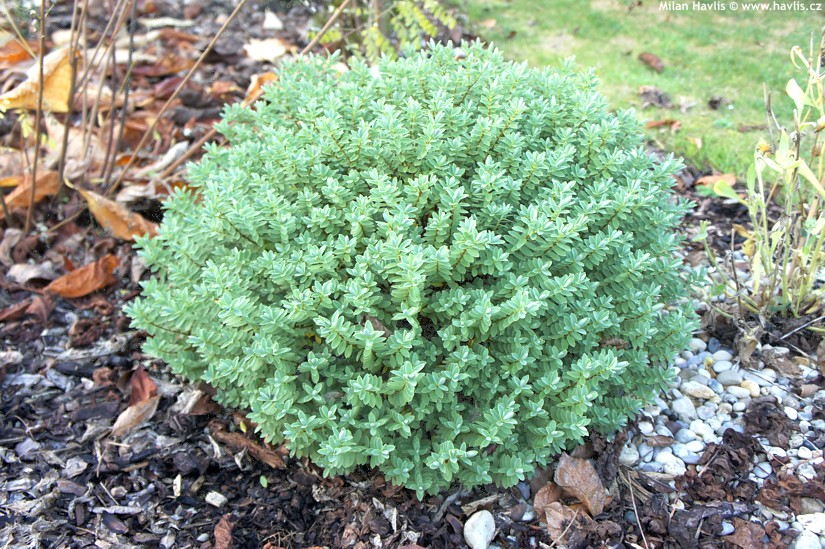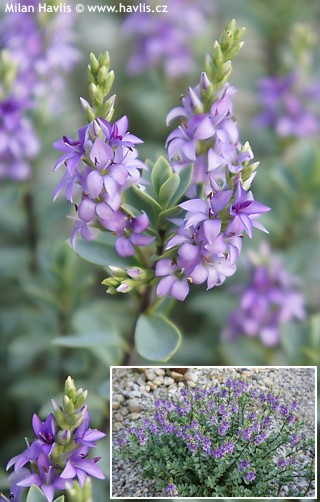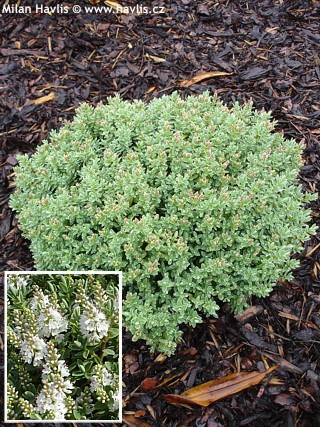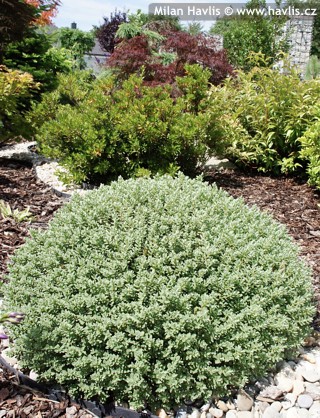Hebe 'COBB VALLEY' hebe
Pinguifolia hebe is probably one of the hardiest hebes of our climate (zone 6). It bears small, blue-green leaves and makes a mounding shrub, useful as a ground cover or a beautiful feature of a heather border. Cobb Valley is a compact and desne growing variety. In early summer and often in early autumn it bears tiny white flowers on purple-brown stalks. Pruning is not needed but may be done in early spring.
Hebes need very well-drained but constantly moist, poor or medium fertile soil that is anything from slightly acidic to slightly alkaline. It needs good mulching at all times. They originate in New Zealand i.e. a country with high air humidity and mild winters so for our climate we only choose the hardies species and varieties which are mostly dwarf and have small leaves. They are hardy on sites sheltered from strong, drying winds and hidden from direct winter sunlight to about -25°C (USDA zone 6). You can protect them with fir branches or white woven in colder regions. Adult hebes usually regenerate readily after harsh winter damage if they are well-established. They can be grown with no protection in USDA zones 7 and up.
Last update 23-01-2011

































